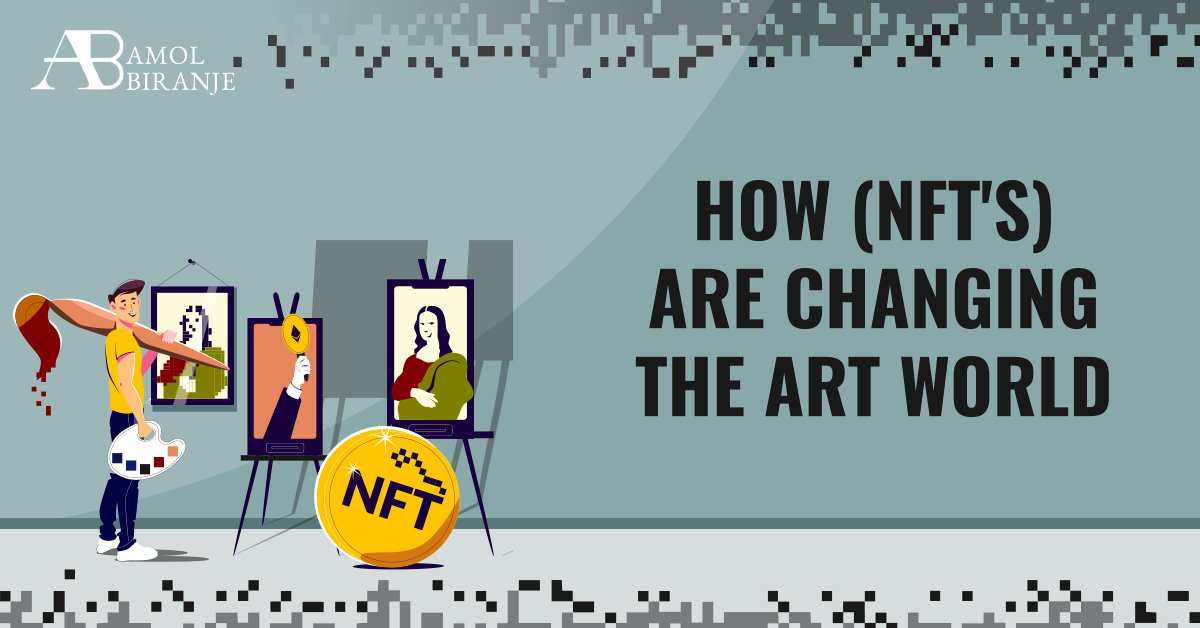This article tells how NFT’s are Changing the Art World. The world of art has been in a state of flux for several years as a result of the rise of digital technologies and the advent of blockchain, which have introduced in new ways of thinking creativity, ownership, and the monetary value works of art. Non-fungible tokens (NFTs) represent one of the most exciting and transformative developments to emerge from this period of change.
In this post, we’ll discuss how NFT’s and the ways in which non-traditional galleries (NFTs) are changing the art world, from the ways in which they have the ability to democratize access to art and artists to the ways in which they are affecting the traditional gatekeepers of the art world.
What are NFTs?
Let’s take a closer look at what NFTs are before we dive into how they are affecting the art industry. For the most part, NFTs are just digital assets that prove you own something special. They can be anything created or shared in the digital art from paintings and songs video-game objects and tweets.
Why are NFTs so popular?
There are several factors driving the popularity of NFTs. For one, they offer a new way for artists and creators to monetize their work in the digital age. By creating an NFT, an artist can sell a unique digital item directly to a collector, without having to go through traditional gatekeepers like galleries or auction houses. NFTs also offer collectors a new way to invest in art and other collectibles, with the potential for significant returns on their investment.
Impact on the art world
So how are NFTs changing the art world? Let’s take a look at some of the key ways.
Democratizing access to art and artists
One of the most exciting aspects of NFTs is their potential to democratize access to art and artists. Because NFTs can be bought and sold online, they give artists who might not have access to galleries or auction houses new places to sell their work.
NFTs also offer a new way for fans and collectors to connect with their favorite artists. Because NFTs are digital, they can include additional content like videos, audio clips, and behind-the-scenes glimpses into an artist’s creative process.
Challenging the traditional gatekeepers
Another way in which NFTs are changing the art world is by creating new revenue streams for artists. In the past, artists have relied on sales of physical artwork or licensing deals to earn money from their creations. However, with NFTs, artists can sell one-of-a-kind digital items that cannot be replicated or copied, thereby creating a new source of income.
This has been particularly important for digital artists, who have struggled to monetize their work in the past. With NFTs, digital artists can now sell their work directly to collectors, without having to rely on print sales or licensing deals.
Driving innovation in art and technology
Finally, NFTs are driving innovation in both the art world and the technology sector. As artists and collectors explore the possibilities of NFTs, they are pushing the boundaries of what is possible with digital art and creating new forms of expression that were previously impossible.
At the same time, NFTs are driving innovation in the blockchain and cryptocurrency industries. As more people become interested in NFTs, developers are working to create new tools and platforms that make it easier for artists and collectors to create, buy, and sell NFTs.
Conclusion
The introduction of non-fungible tokens has had far-reaching effects on the art world, including the lowering of entry barriers to both works of art and artists, the disruption of established art market structures, the development of new revenue streams for creative professionals, and the acceleration of innovation in the visual arts and the digital technology industries. There is no denying that NFTs mark a watershed point in the development of artistic expression, despite the fact that they continue to face obstacles and controversy. It’ll be interesting to see how NFTs develop and change the art industry in the years to come.














0 Comments